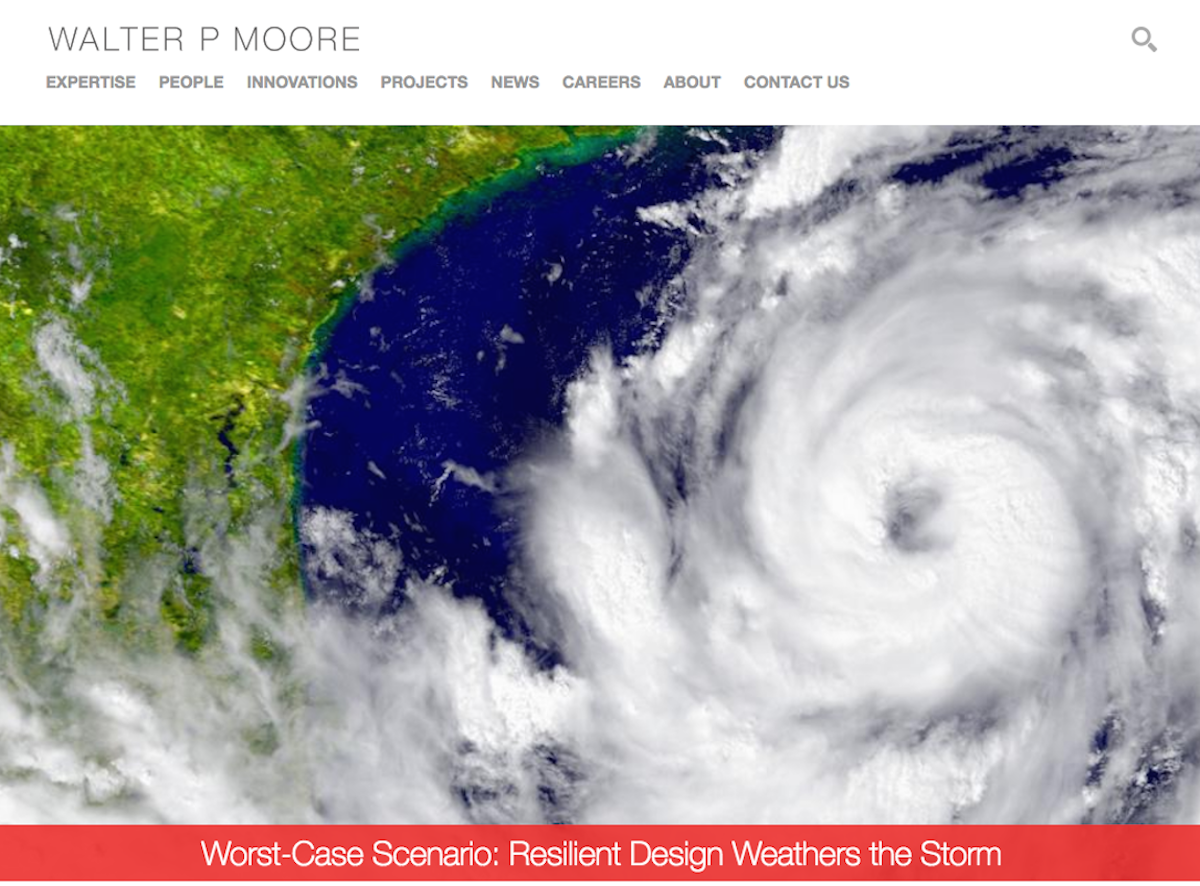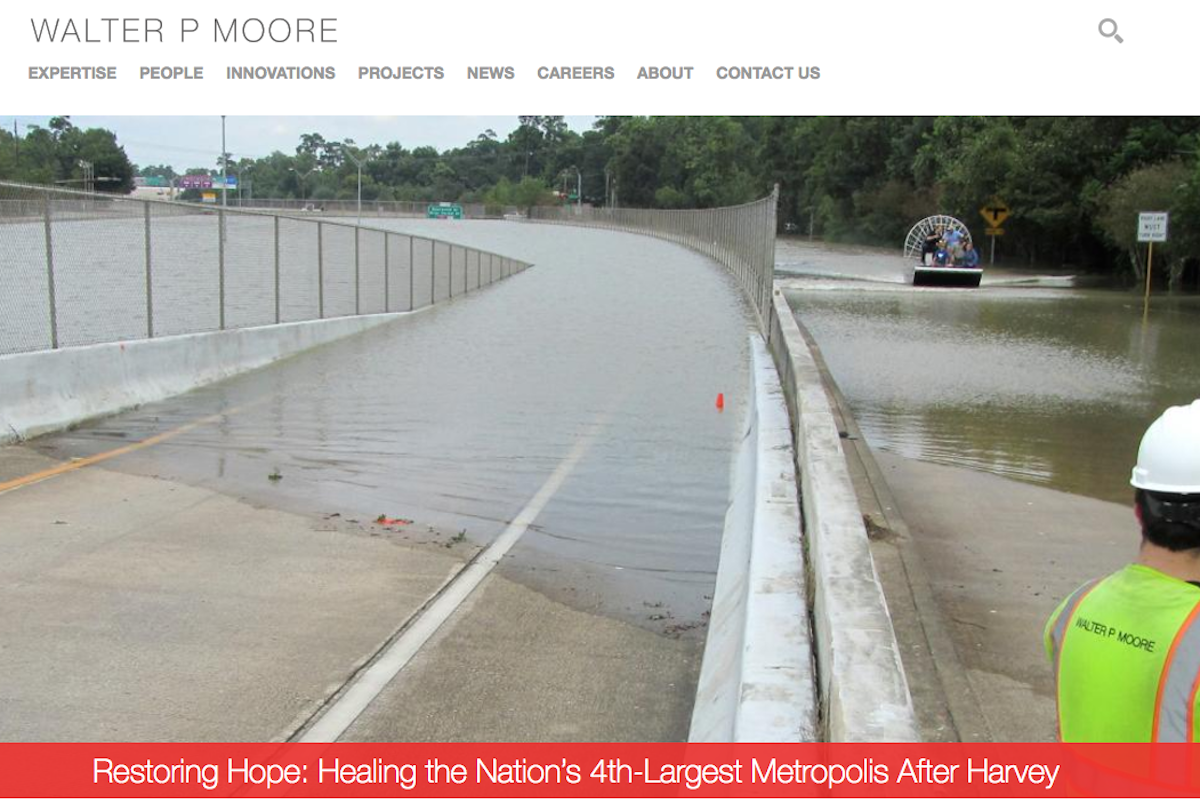How Hurricane Harvey Could Have Damaged This Website
by MGB2B
While they have changed it as of late, the image above was the lead message on the Walter P Moore website a few days after Hurricane Harvey made landfall. Walter P Moore is an engineering firm headquartered right in Houston. When you click on the slide, it takes you to a blog post from May about building structures that are resilient in the face of hurricane season. Which was all well and good in May.
On September 1, however, it was a little alarming to see this image without a community outreach message accompanying it. Other Houston companies like ConocoPhillips and Amegy Bank had this type of message of encouragement within a few days after the storm hit.
To be fair, Walter P Moore seems to have (rightly) placed more importance on getting into the trenches and helping out the city right away than they did on their website. It was encouraging to see a new lead slide when I returned to their website.
What We Should Have Seen on the Website Right Away:
Branding after disasters – whether natural or manmade – can be precarious. (Some are downright tasteless.) But there are a few guidelines you can follow. Doing so can ensure your business is regarded as a caring, socially responsible member of the community.
Here’s a Quick Guide to Website Updates after a Natural Disaster:
- Have a Contingency Plan. Most of the time, your website won’t have any content that will offend your target audience. But when a disaster happens, that can change in a second. Make sure someone in your organization is in charge of reviewing dynamic site content regularly. This comes in particularly handy after natural disasters or major world events. This person should know your brand and business well and have direct access to your website so they can make edits. The key is to have an alternate person in charge in case Person A is unable to update your site.
- Make Sure Your Website Can Be Managed by Your Staff. If you’re not already using a CMS (Content Management System), you might want to change that. Using one makes it easy for you to follow Rule #1. In a pinch, you’d be able to have any (trusted) colleague go online and make changes to your site.
- Don’t Use a Disaster-Response Message to Sell. When you do post something on your site responding to a hurricane, a terrorist attack, or any type of disaster, make sure your message cannot be seen in any way as selling your products or services. This may seem like common sense, but a lot of brands ignore the rule. Don’t be one of them.
- Be Sensitive to the Emotional Needs of Your Community. This should go without saying. If you can’t come up with something on your own, find a good writer to carefully craft the message you want to appear on your site. Let the community know that you are with them. This can take the form of a letter from the CEO or a simple visual that links to a blog talking about the disaster aftermath and the need for help. If it’s not your community and you want to help out, you can include a donation button on your website, so that anyone who visits can help out through your site. There are many options available.
Walter P Moore redeemed itself with both its actions and its new lead website story. Your brand can be a step ahead of the game by following the advice above. Instead of responding, just be ready for whatever might come down the pike. These days, it could very well be anything.
In the meantime, let’s send out our heartfelt support to the communities affected by both Harvey and Irma in the past few weeks. They are going to need all the help they can get.
Tags: brand response, hurricane harvey, PR, public relations, website response to natural disaster, website updates after a natural disaster
